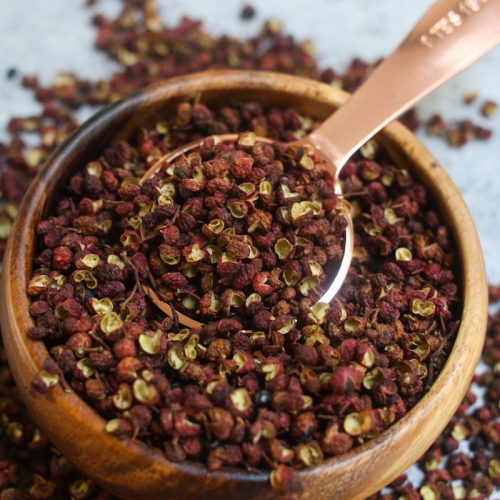Did you know that some of the spices you commonly use in your cooking are actually traditional Chinese medicine herbs? Several herbs not only add flavor to your food but also offer various health benefits. In this article, we will explore the medicinal properties and culinary applications of Sichuan pepper, Tsaoko, Star Anise, and Fennel seeds.
 |
| Sichuan pepper |
Huo Jiao(花椒),Chuan Jiao(川椒), Sichuan pepper
Sichuan pepper, also known as Hua Jiao, is a popular spice used in several cuisines, including Chinese, Nepali, Kashmiri, Tibetan, and Bhutanese. It has a unique citrus-like flavor and is known for inducing a tingling numbness in the mouth. In traditional Chinese medicine, Sichuan pepper is considered hot and acrid, and it is used to warm the middle Jiao, disperse cold, and relieve pain. It is also believed to have anti-parasitic properties and can be used to treat itching.

Cao Gui(草果), Tsaoko
Tsaoko, or Cao Guo, is another lesser-known spice with smoky notes and a hint of camphor. Sometimes it is often called Chinese Cardamon, though there are many Chinese herbs which can be called cardamon, eg. Bai Dou Kou. It is commonly used in Chinese cuisine to add flavor and aroma to dishes, and it is also used in TCM to treat digestive issues such as bloating and stomach pain. It has a warm nature and acrid taste, and enters the Spleen and Stomach channels. Tsaoko is believed to strongly dry dampness and disperse cold, as well as dissolve stagnation and distention. Some studies have identified antibacterial properties in Tsaoko essential oil, but more research is needed to confirm its effectiveness as a medicine or food preservative.
 |
| Fennel seeds |
Xiang(茴香), Xiao Hui Xiang(小茴香), Fennel seeds
According to Táo Hóng Jǐng (陶弘景, 456-536 CE), even a small amount of fennel can eliminate the bad smell when boiling meat with a strong odor, leaving a pleasant aroma. This is the reason why this herb is called Hui Xiang (茴香), which literally means "fragrant herb" in Chinese. There are two types of Hui Xiang: Da Hui Xiang (大茴香) and Xiao Hui Xiang (小茴香). Da Hui Xiang is known as Star Anise, while Xiao Hui Xiang is fennel seeds, and it is Hui Xiang in classic texts.
Fennel seeds, or Foeniculum vulgare, are another common spice used in various cuisines worldwide. They have a sweet, licorice-like flavor and are often used in Indian and Middle Eastern cooking. In traditional Chinese medicine, Fennel seeds are called Xiao Hui Xiang(小茴香). It is a warm and acrid herb derived from the Foeniculum vulgare plant. It enters into the Liver, Kidney, Spleen, and Stomach channels. The main actions of Xiao Hui Xiang involve dispersing cold and relieving pain, as well as regulating qi and harmonizing the Stomach. With a typical dosage ranging from 3 to 9 grams, this versatile herb is often used to treat conditions such as abdominal pain, indigestion, and bloating. Dill and fennel often get confused for one another. They seem similar in appearance, but they are in fact two different plants.
| Star Anise |
Da Hui Xiang (大茴香), Star Anise
Star Anise, or Illicium verum, is a spice widely used in Chinese, Indian, and Indonesian cuisines. It has a distinct, licorice-like flavor and is a key ingredient in the Chinese five-spice powder. In traditional Chinese medicine, Star Anise is considered warm and acrid, and it is used to treat abdominal pain, bloating, and indigestion. It is also known for its antiviral and antibacterial properties, making it a valuable addition to herbal remedies for colds and flu.